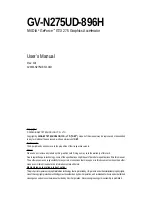
36
VideoSystem Cameo 400 DV
each one must have at least 256 components. This is exactly one Byte of memory. One single
video frame requires 768 Pixels x 576 Pixels x 3 Bytes = 1327104 Bytes. That's about 1,2 MB
per frame!! So if you want to record one second of RGB video you need about 31,6 MB of drive
space. A 2 gigabyte hard drive has a video capacity of approximately one minute using this
standard. Given the fact that there are not (yet) any drives that can handle such huge
amounts of data, there is the possibility to transform the video signal by using another color
spectrum (usually YUV) and through compression (usually MJPEG) so that the size is greatly
reduced.
SECAM
– The British drive on the left, the French use SECAM. Next to PAL and NTSC, SECAM is
the third video standard in the group, but which is only used in France and a few other eastern
countries. Secam was also used in the former DDR in Germany.
Storyboard
– In contrast to the Timeline the Storyboard gives you a thematic overview of the
project components. Individual scenes are easily identified, but there is no real relation to the
length of the project.
S-Video
– Unlike by Composite Video Chrominance and Luminance in the video signal are
separated from each other achieving a higher quality.
Timeline
– The Timeline displays the positioning of your video and audio clips as well as
transitions.
Transition
– See Overlay
Trimming
– This describes cutting a video clip at the beginning and/or end.
Video for Windows
– This is the relatively old, but still commonly used video concept under
Windows.
Video filter
– Using the Video filters you can manipulate your video material in various ways.
For example you can change the colors or activate complex filters to make your film look like
an old silent reel.
YIQ
– YIQ is a color spectrum related to YUV. It is also determined by brightness -> Luminance
(Y), and also by the color components I (cyan orange balance) and Q (magenta green
balance). YIQ e. g. is primarily used by NTSC.
YUV
– This color spectrum is composed of the brightness component -> Luminance (Y) and the
two color components -> Chrominance (U,V).

































